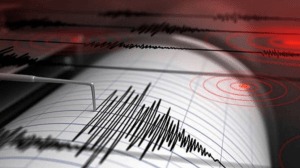A Portuguese engineering group is participating in the largest NASA space telescope project to date, the ‘James Webb Space Telescope (JWST),’ whose launch date is scheduled for the 17th of December.
A recent statement said that “The JWST is considered the most powerful space telescope ever built, and Portugal, through ISQ (Portuguese scientific and technological organisation), is supporting this bold NASA space mission.” Portuguese engineers are in charge of the electrical and radio frequency tests (antennas), the filling of the fuel tank and the respective pressurisation operations, as well as the final integration of the launcher.
The JWST is the successor to the Hubble telescope and will be launched into space aboard the Ariane 5 rocket housed at the European Space Agency’s (ESA) Guyana Space Centre near Kourou, French Guiana.
Just recently ISQ’s President, Pedro Matias, stated that the “ISQ, through its presence at ESQS (Europe Spatial Qualité Sécurité) is involved in the Webb Space Telescope’s mission to monitor the safety of operations, by verifying – from the point of view of safeguarding and protecting the environment – the compliance of the satellite (including operational procedures) with regulations, safety studies and operating licenses, also providing support for the development of final preparation operations before launching.”
“We have been providing Quality Assurance/Quality Control (QA/QC) services at the European Space Centre (CSG) in French Guiana for almost two decades, with a magnificent team and excellent employees who are permanently at the aerospace base in Kouru. We also work at the operational quality level (quality on board and quality on the ground) of the Ariane 5, Soyuz and Veja launch systems.”
“Portugal has been increasingly investing in the aerospace industry and, fortunately, today we have several important companies working in this area and that are internationally recognised.”
The James Webb Space Telescope, according to ISQ, is “another giant step in terms of observing the cosmos.”
With a mirror six times the size of Hubble’s and a sunscreen the size of a tennis court, the JWST will focus on the first light in the universe (early starlight), the formation of galaxies in the early universe, the birth of stars, protoplanetary systems and planets (including the origins of life), and will study the atmosphere of habitable exoplanets orbiting the sun, 1.5 million kilometers away from Earth, in what is called the second Lagrange point or L2.
The ISQ president added that he hopes that the aerospace sector will be considered strategic within the framework of Portugal 2030, recalling that the Portuguese government has been “considering this area as an area for the future. We have all the conditions for, in the medium term, for Portugal to assert itself in certain components of the aerospace cluster.”
Of course the question is, if we can identify the formation of planets, the origins of life, and look at how we can exploit other habitable planets, why are we making so little headway in combating Covid-19?
Samantha Gannon
info at madeira-weekly.com

